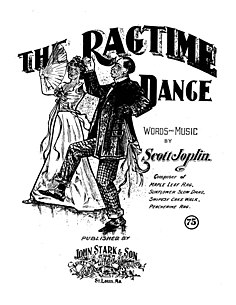
Classic rag (short for classical ragtime) is the style of ragtime composition pioneered by Scott Joplin and the Missouri school of ragtime composers. These compositions were first considered "classic" by Joplin's publisher, John Stark, as a way to distinguish them from what he considered the "common" rags of other publishers. Today, any composition fitting this particular ragtime structural form is considered classic rag.
In the earliest days of ragtime, there was little consensus on how to print the syncopated melodies of ragtime, so there was considerable variety in the formatting of sheet music. Pieces appeared in common meter, in 4/4 time, and in 2/4 time, and often followed conventions of earlier musical forms such as the march. As the 20th century dawned, most composers, arrangers, and publishers began to settle on a common set of notational and structural conventions, and because Scott Joplin was the best-selling ragtime composer in that era, his conventions eventually predominated. The "classic rag" form can thus be considered a typical form of a ragtime piano composition, though it is by no means the only form.[citation needed]